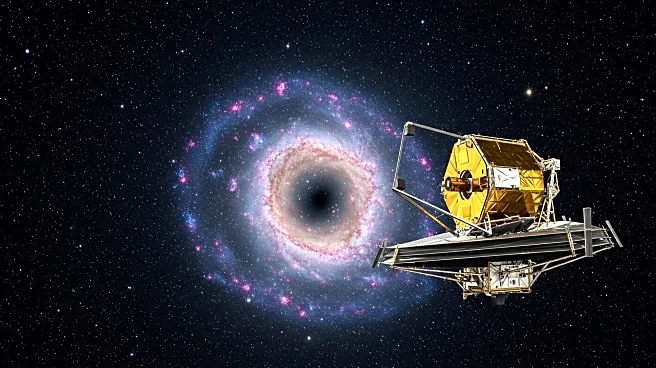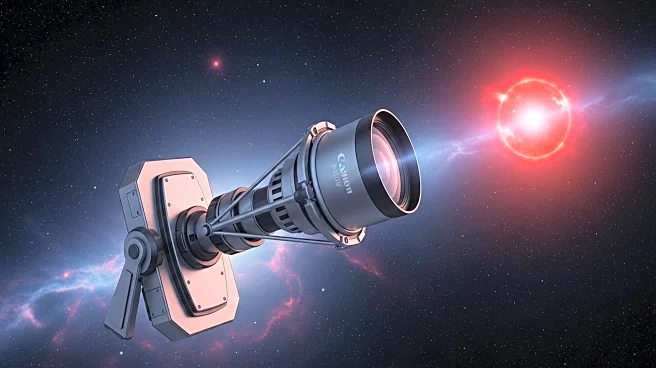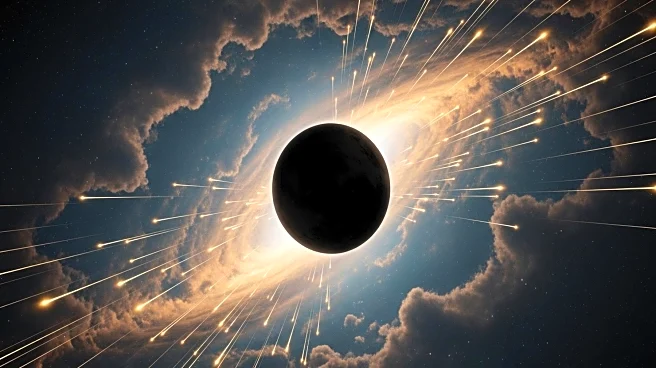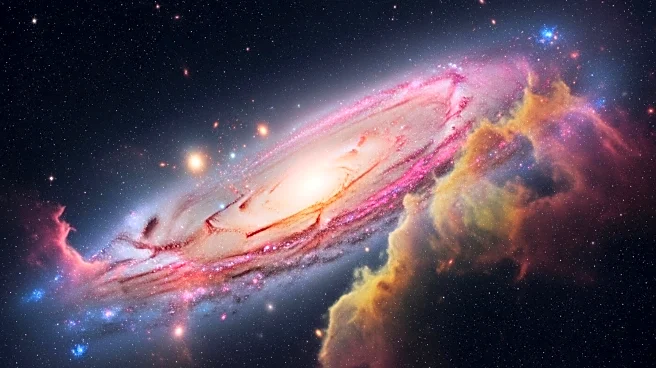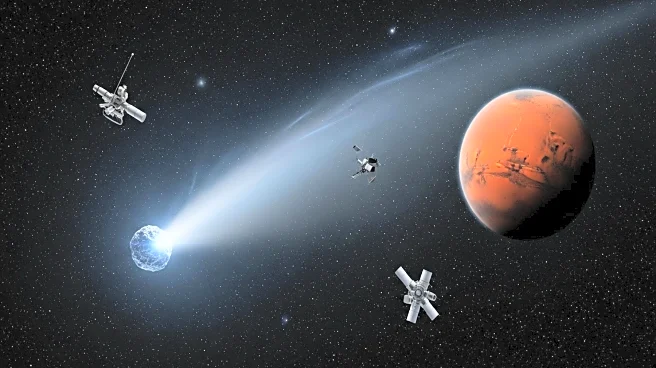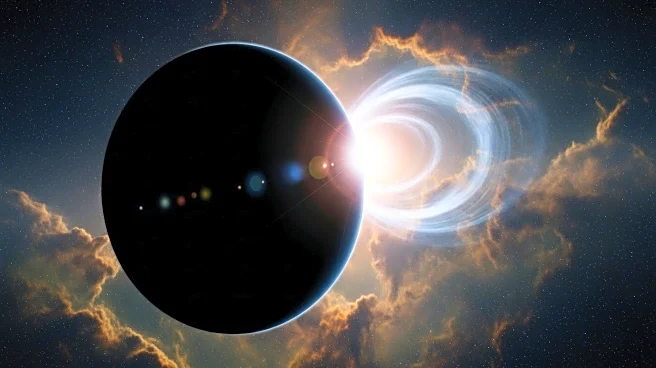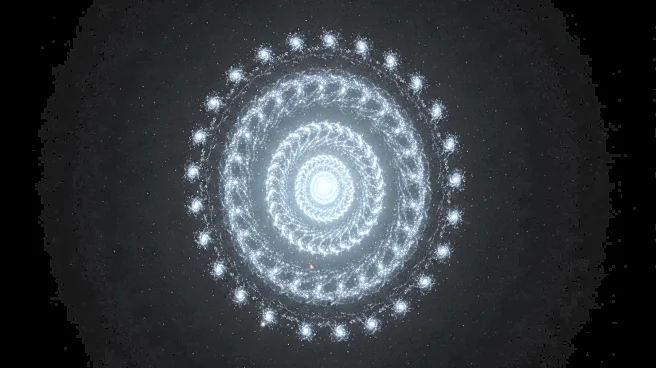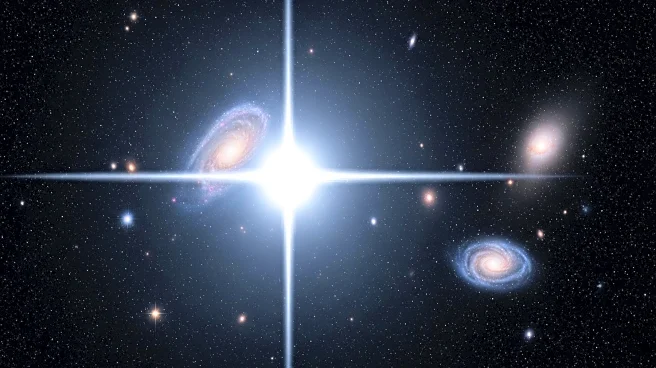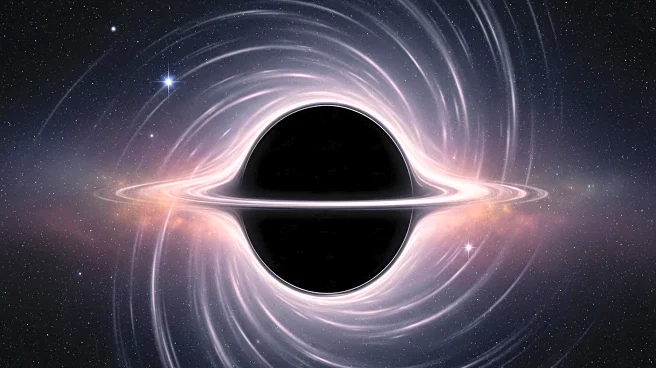What's Happening?
Astrophysicists using the James Webb Space Telescope (JWST) have identified four candidates for 'dark stars,' a new type of cosmic object potentially powered by dark matter. These stars, hypothesized in 2007, are believed to be among the first stars formed after the Big Bang. The study, published in PNAS, suggests that these stars are extraordinarily massive and bright, offering insights into the nature of dark matter and the formation of supermassive black holes.
Why It's Important?
The discovery of dark stars could revolutionize our understanding of the early universe and the role of dark matter in star formation. It provides a potential explanation for the rapid formation of supermassive black holes and offers a new perspective on cosmic evolution. This could lead to advancements in cosmology and the study of dark matter, impacting theories about the universe's structure and origins.
What's Next?
Researchers are conducting simulations to determine the conditions under which dark stars can form, focusing on the presence of oxygen and other elements. Further observations and data analysis are needed to confirm the existence of dark stars and differentiate them from other primordial star types. This could lead to new discoveries about the universe's earliest stars and the processes that shaped cosmic evolution.
Beyond the Headlines
The study of dark stars challenges existing paradigms in astrophysics and opens new avenues for exploring the universe's mysteries. It highlights the importance of advanced telescopes like JWST in uncovering hidden aspects of cosmic phenomena, potentially leading to breakthroughs in our understanding of dark matter and the universe's origins.

